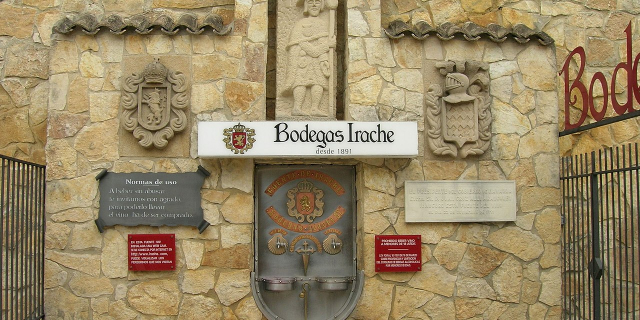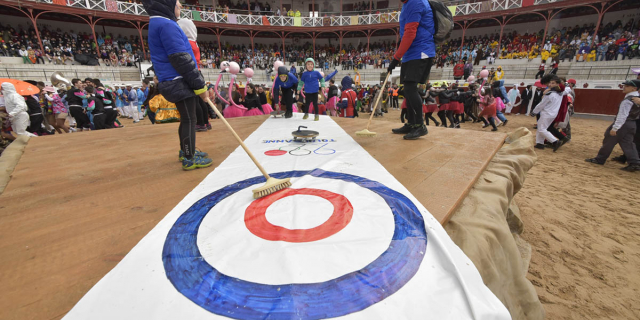Iruñeko Sanferminak
( Festival of San Fermín )
The festival of San Fermín is a week-long, historically rooted celebration held annually in the city of Pamplona, Navarre, Spain. The celebrations start at noon on 6 July and continue until midnight on 14 July. A firework (Chupinazo) starts off the celebrations and the popular song Pobre de mí is sung at the end. The most famous event is the running of the bulls, which begins at 8 a.m. each day on 7–14 July, but the festival involves many other traditional and folkloric events. It is known locally as Sanfermines in Spanish and Sanferminak in Basque, and is held in honour of Saint Fermin, the co-patron of Navarre.
Its events were central to the plot of The Sun Also Rises by Ernest Hemingway, which brought it to the general attention of the English-speaking world. It has become probably the most internationally renowned festival in Spain with ove...Read more
The festival of San Fermín is a week-long, historically rooted celebration held annually in the city of Pamplona, Navarre, Spain. The celebrations start at noon on 6 July and continue until midnight on 14 July. A firework (Chupinazo) starts off the celebrations and the popular song Pobre de mí is sung at the end. The most famous event is the running of the bulls, which begins at 8 a.m. each day on 7–14 July, but the festival involves many other traditional and folkloric events. It is known locally as Sanfermines in Spanish and Sanferminak in Basque, and is held in honour of Saint Fermin, the co-patron of Navarre.
Its events were central to the plot of The Sun Also Rises by Ernest Hemingway, which brought it to the general attention of the English-speaking world. It has become probably the most internationally renowned festival in Spain with over a million people coming to participate.
 Facade of the City Council of Pamplona decked out for the San Fermín festivities.
Facade of the City Council of Pamplona decked out for the San Fermín festivities.Fermín is said to have been the son of a Roman of senatorial rank in Pamplona in the 3rd century, who was converted to Christianity by Saint Honestus, a disciple of Saint Saturninus. According to tradition, he was baptised by Saturninus (in Navarre also known as Saint Cernin) at the spot now known as the "Small Well of Saint Cernin"[a][1] Fermín was ordained a priest in Toulouse, and returned to Pamplona as its first bishop. On a later preaching voyage, Fermín was dragged to death; and is now considered a martyr in the Catholic Church.[1] It is believed he died on September 25, AD 303. There is no written record of veneration of the Saint in Pamplona until the 12th century. Saint Fermín, as well as Saint Francis Xavier, are now the two patrons of Navarre.[1] In Pamplona, Saint Fermín is now sometimes said to have met his end by being dragged through the streets with angry bulls running after him, hence the tradition.[citation needed]
The celebration of the festival has its origin in the combination of two different medieval events.[2] Commercial secular fairs were held at the beginning of the summer. As cattle merchants came into town with their animals, eventually bullfighting came to be organised as a part of the tradition.[2] Specifically, they were first documented in the 14th century. On the other hand, religious ceremonies honouring the saint were held on October 10.[2] However, in 1591 they were transferred to July 7 to take place at the same time as the fair, when Pamplona's weather is better.[2] This is considered to be the beginning of the Sanfermines. During medieval times acts included an opening speech, musicians, tournaments, theatre, bullfights, dances or even fireworks.[2] Bullrunning appears in 17th and 18th century chronicles together with the presence of foreigners and the first concerns about the excessive drinking and dissolute behaviour during the event.[2] Finally, the Parade of Giants[b] was created in the mid-19th century.[2] The first official bullring was constructed in 1844.[citation needed]
Present Monument to Hemingway outside the bullring in Pamplona.
Monument to Hemingway outside the bullring in Pamplona.The worldwide fame of the modern festival, and the great number of foreign visitors it receives every year, are closely related to the description in Ernest Hemingway's book The Sun Also Rises[c] and the reports he made as a journalist.[3] He was fascinated when he first visited in 1923, and returned many times until 1959.[3] Hemingway was also deeply fond of bullrunnings and bullfights, but he did not participate in the running. Different city locations such as La Perla Hotel[3] or the Iruña Café are famous in part due to the fact that the writer used to visit them. Another famous American author, James Michener, wrote extensively about the festival and bullfighting in his non-fiction book Iberia. His writing explained the art and business of bullfighting with tremendous gracia by explaining the importance of pundonor.[citation needed]
PastThe San Fermín Festival of the past was not like it is today: it has changed gradually over the years. Originally most of the youth looked forward to the festivities all year, saving money until they had at least fifty pesetas, the minimum necessary to watch the running of the bulls, have a snack and wine, eat lunch and dinner out, and eat churros with brandy a couple of times each San Fermín day.[clarification needed]
After the religious function, the group formed by the Authorities and village, they came back to the Home of “the town”, at about 90 minutes after leaving it. Then was effectuated the move, to contemplate the bulls that while they were waiting to move, they grazed in the grove.[4][clarification needed]
The COVID-19 pandemic caused the festival to be cancelled in 2020 and 2021.[5][6]
Cite error: There are <ref group=lower-alpha> tags or {{efn}} templates on this page, but the references will not show without a {{reflist|group=lower-alpha}} template or {{notelist}} template (see the help page).





































Add new comment